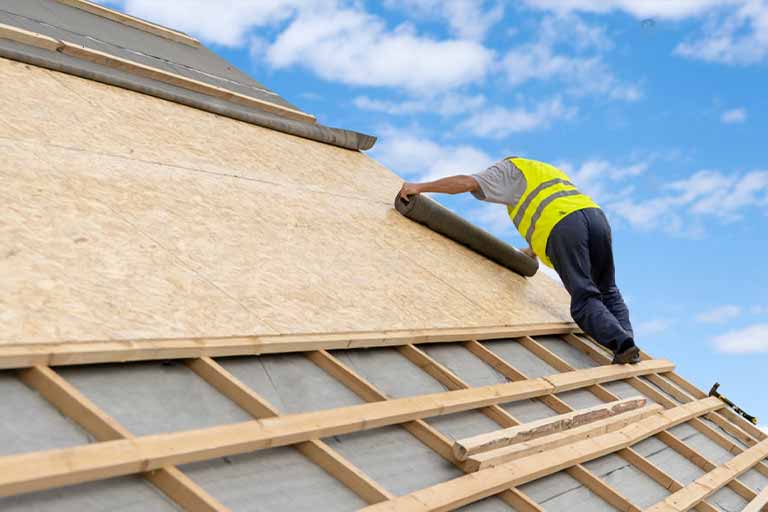
How to Waterproof Plywood: Techniques and Products
How to Waterproof Plywood: Techniques and Products
Plywood is a versatile material with many applications, but it is also highly vulnerable to moisture damage. Exposure to moisture can cause plywood to warp, swell, or rot, ultimately leading to structural failure. Waterproofing plywood is essential to enhance its durability and lifespan. This blog post discusses various waterproofing techniques and products that you can use to protect your plywood project.
Understanding the Need for Waterproofing Plywood
Plywood is made by gluing together several layers of wood veneers, which makes it highly susceptible to moisture damage. When exposed to water, plywood can absorb moisture, causing it to expand and contract, leading to cracks, warps, and delamination. In wet environments, untreated plywood can rot, leading to structural failure.
Therefore, waterproofing plywood is essential to protect it from moisture damage and increase its longevity. By applying waterproofing solutions, you can seal the surface of the plywood, preventing water penetration and reducing the risk of damage.
Preparing Plywood for Waterproofing
Before waterproofing, it is crucial to prepare the plywood surface properly. Firstly, check the surface for any defects or damage. Sand the surface to ensure smoothness and proper adhesion of the waterproofing solution. Secondly, seal the edges of the plywood with an appropriate sealant, such as silicone caulk, to prevent water penetration.
Waterproofing Techniques
Various techniques can be used to waterproof plywood, depending on your project’s needs. Some popular techniques are as follows:
Paint or Varnish
Paint or varnish is a common waterproofing solution for plywood. It is essential to select an appropriate waterproof paint or varnish product. Apply the paint or varnish in thin layers with a brush or roller, following the manufacturer’s instructions. Apply at least two coats to ensure complete coverage.
Epoxy Resin Coating
Epoxy resin is a two-part system that creates a hard, durable, and waterproof surface. It is highly resistant to moisture and can protect plywood from damage. Firstly, prepare the surface of the plywood by cleaning it thoroughly. Mix the two parts of the epoxy resin according to the manufacturer’s instructions. Apply the epoxy resin to the plywood surface with a brush or roller, following the manufacturer’s instructions. Allow the epoxy resin to cure completely before using the plywood.
Sealants and Caulks
Sealants and caulks are flexible, waterproof materials that can be applied to the surface of the plywood. They are available in various types, such as silicone, polyurethane, and latex. Select an appropriate sealant for your project and apply it to the plywood surface with a caulking gun. Spread the sealant evenly with a putty knife and allow it to dry completely.
Waterproofing Products
Several waterproofing products are available in the market that you can use to protect your plywood project. Some popular products are as follows:
Marine Grade Plywood
Marine-grade plywood is a high-quality plywood that is inherently water-resistant. It is made with waterproof glue and treated with chemicals to enhance its water resistance. Marine-grade plywood is ideal for applications that require exposure to water, such as boats, docks, and outdoor furniture.
Waterproofing Membranes
Waterproofing membranes are thin, flexible sheets that can be applied to the surface of the plywood to protect it from moisture. They are available in various types, such as liquid-applied and sheet membranes. Apply the membrane to the plywood surface with a trowel or roller, following the manufacturer’s instructions.
Polyurethane and Acrylic Sealants
Polyurethane and acrylic sealants are waterproof materials that can be used to seal the surface of the plywood. They are highly flexible, making them ideal for applications that require movement. Polyurethane sealants are more durable and resistant to chemicals, while acrylic sealants are more affordable and easier to apply.
Additional Tips and Considerations
Aside from waterproofing techniques and products, there are some additional tips and considerations that you should keep in mind:
- Proper ventilation and drainage are essential to prevent moisture buildup, which can lead to damage. Ensure that the area around your project has adequate ventilation and drainage.
- Waterproofed plywood requires periodic maintenance to ensure its longevity. Regularly inspect your project for signs of damage and reapply the waterproofing solution as needed.
- There are alternative waterproofing methods available, such as fiberglassing and cementitious coatings. However, they are not suitable for all applications and require specialized skills and tools to apply.
Waterproofing plywood is essential to protect it from moisture damage and extend its lifespan. By following the appropriate waterproofing techniques and using the right products, you can ensure that your plywood project stays strong and durable. At SFK Plywood, we offer a wide range of high-quality plywood products, including film faced birch plywood, hexa flooring, and laminated birch plywood. For more information about our products, please visit our website or contact us.